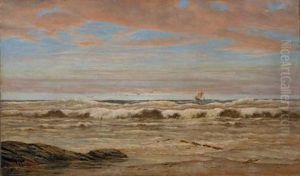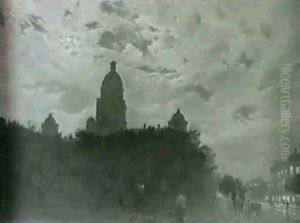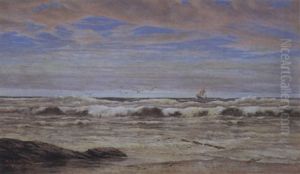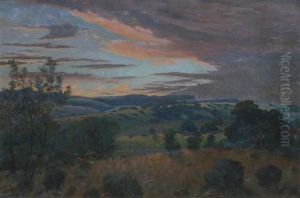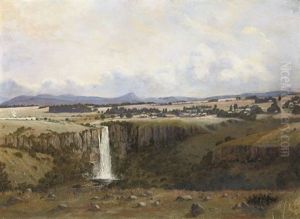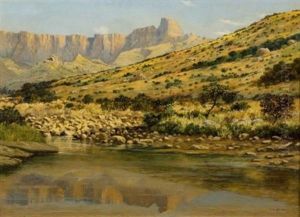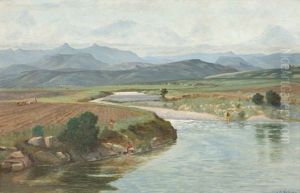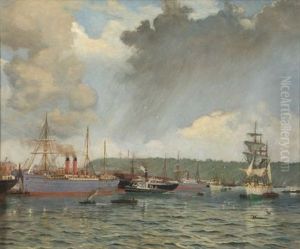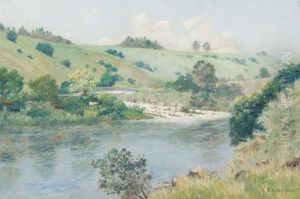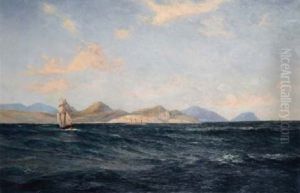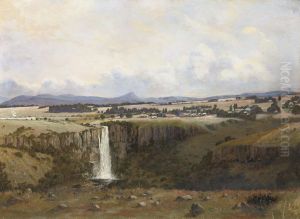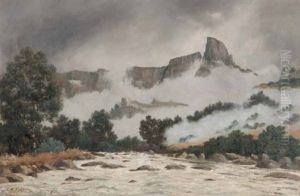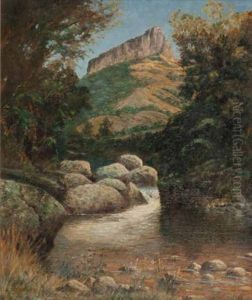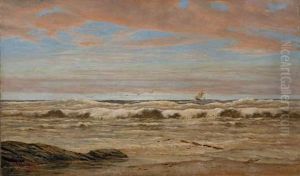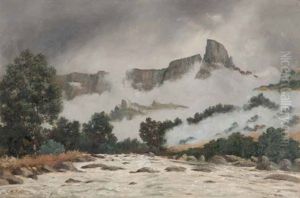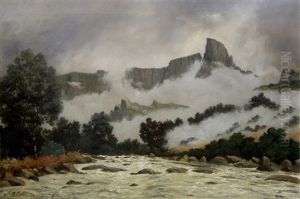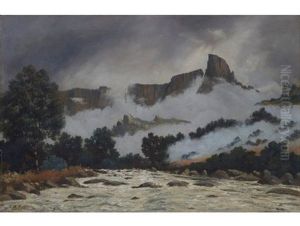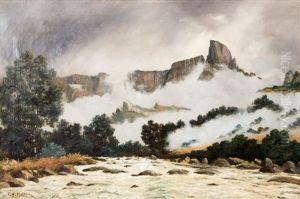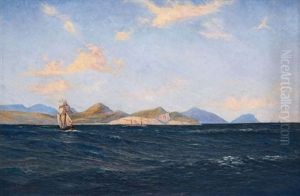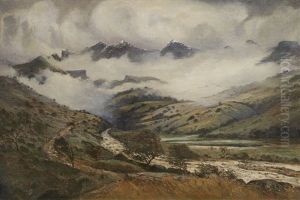Cathcart William Methven Paintings
Cathcart William Methven was a Scottish-born South African artist and engineer who made significant contributions to both fields during his lifetime. Born on May 18, 1849, in Perth, Scotland, Methven showed an early talent for drawing and painting. He pursued his artistic interests alongside a career in engineering, a dual vocation that he would maintain throughout his life.
In his early years, Methven worked as an apprentice in a firm of civil engineers and shipbuilders in Scotland. His keen interest in maritime subjects was likely influenced by this experience. Methven continued to develop his artistic skills, and his proficiency in both fields eventually led to a significant opportunity abroad.
In 1879, Methven moved to South Africa to take up a position as the Harbour Engineer in Port Elizabeth. His engineering work was crucial in developing the port and its infrastructure, but he also became an important figure in the local art scene. Methven was instrumental in establishing the Port Elizabeth Art Club in 1882, which later became the Eastern Province Society of Arts and Crafts.
Throughout his time in South Africa, Methven continued to paint. His works often included South African landscapes, seascapes, and harbor scenes, reflecting both his professional expertise and his artistic interests. He was known for his skillful use of watercolors and his ability to capture the atmospheric qualities of his chosen subjects.
Methven's contributions to South African art were recognized during his lifetime. He was a member of the South African Society of Artists and exhibited his works in various exhibitions. His paintings were well received, and he built a reputation as an accomplished artist.
Cathcart William Methven passed away on October 4, 1925, in South Africa. Today, his works are part of South African art history and can be found in art collections and museums. They serve as a testament to his talent and to the unique combination of his engineering and artistic skills, which allowed him to capture the essence of South Africa's maritime landscape during the late 19th and early 20th centuries.
